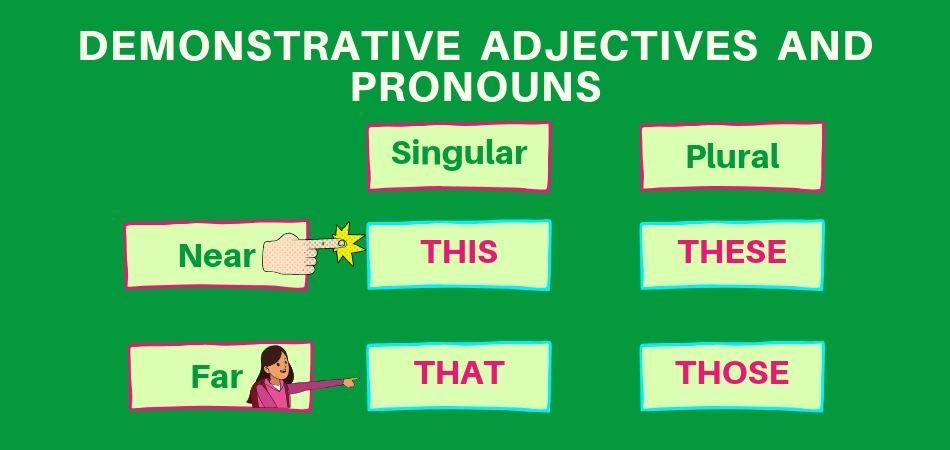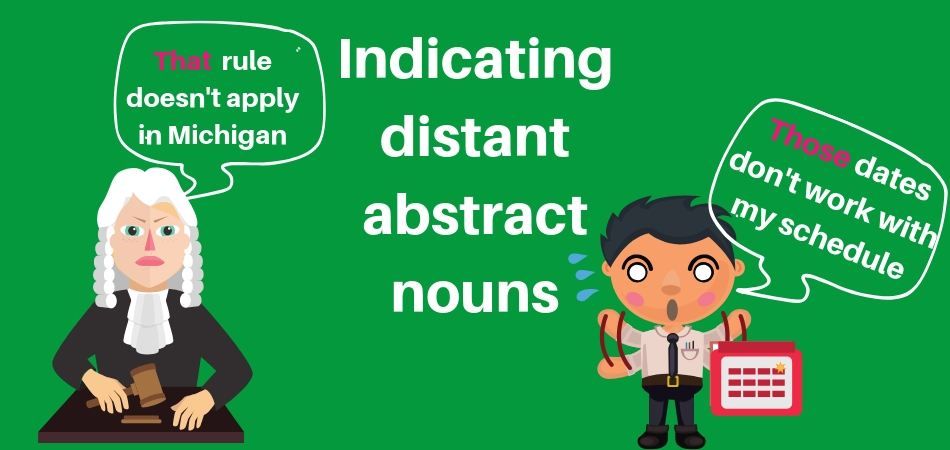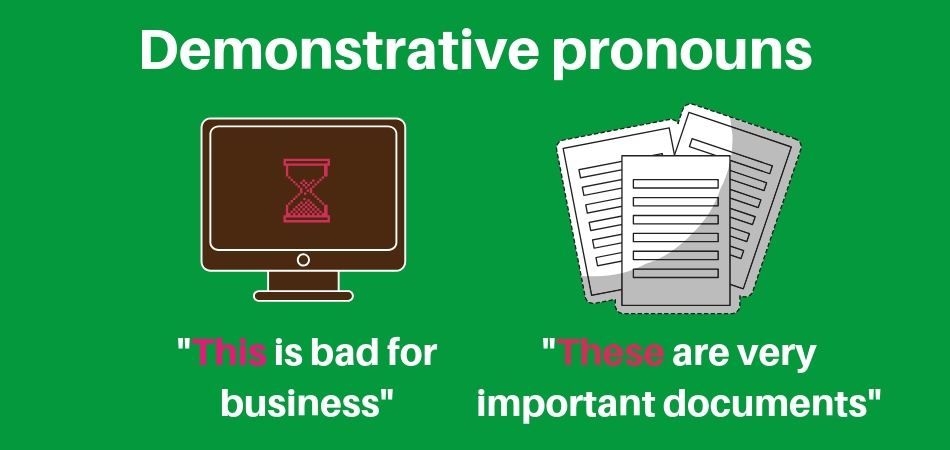This and these for items that are close.
If you can touch something, if it is in your hand or very close to you, then we use this for singular things and these when you have more than one. Here are some examples:
- This file is very heavy.
- This chair is broken.
- These office supplies are for managers only.
- These reports are out of date.
This and these for abstract nouns (that you cannot touch)
We also use this and these to talk about nouns which are not physically near but are close in other ways. Such as information presented in a photo or a list of names on the screen.
- Some employees have been seen smoking on company premises. This behaviour is not acceptable.
- These employees have been sanctioned
That and those for items that are further
away
We use that and those for items which are not close or are further away compared to another item.
- The options are all good but that candidate has the best profile
- Those proposals were not good enough, I threw them away
That and those for distant abstract nouns.
The demonstrative adjectives that and those specify distant abstract nouns such as dates or times or rules and theories.
- That rule doesn’t apply in Michigan.
- Those dates don’t work well for my schedule
This, these, that and those as demonstrative pronouns
A demonstrative pronoun replaces a noun in a sentence. We use the demonstrative pronoun with a verb or by itself. Some example sentences are:
- This – My computer is very slow today! This is bad for business.
- These – These are very important documents.
- That – I saw you worked on the Phoenix project, that was a difficult task!
- Those – There are so many designs to choose from, I can only say that I don’t like those.
This, these, that and those as demonstrative adjectives
A demonstrative adjective clarifies if a noun is near or far. We use the demonstrative adjective with a noun. For example:
- This – My computer is very slow today! This problem is serious.
- These – These documents are very important.
- That – I saw you worked on the Phoenix project, that task was difficult!
- Those – There are so many designs to choose from, those samples are beautiful.


